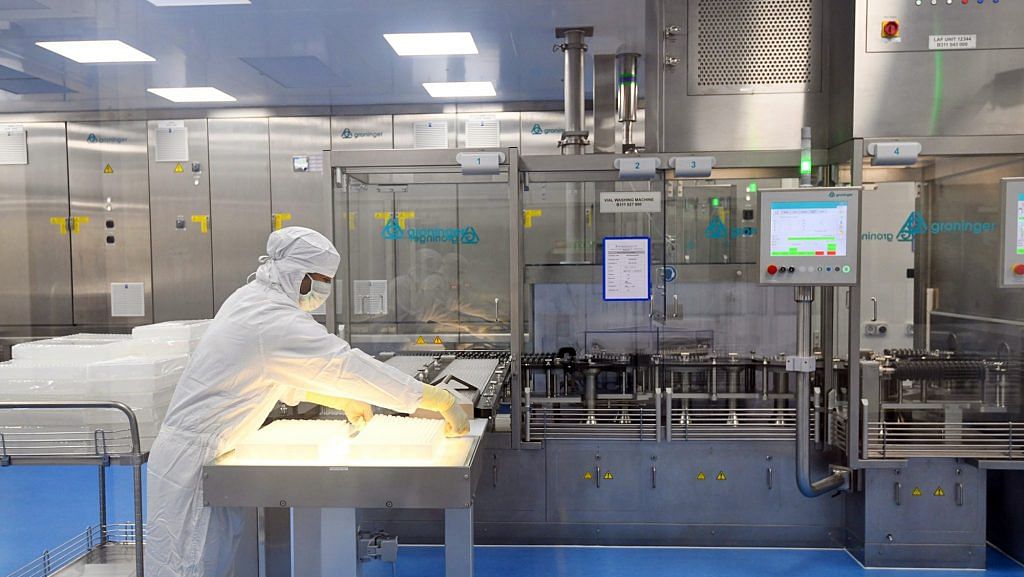New Delhi: Covishield became the first Covid-19 vaccine to be recommended for approval in India Friday. It is pharmaceutical company Serum Institute of India’s version of the Oxford-AstraZeneca vaccine that was approved by the UK government Wednesday.
New Delhi has followed suit. On Saturday, the Union Ministry of Health said the vaccine has been recommended for restricted emergency use.
Here is what we know about the Covishield vaccine that had been in the works for several months.
How it works
Known as ChAdOx1 nCoV-19 or AZD1222, the vaccine is based on a weakened version of a common cold virus or the adenovirus that is found in chimpanzees. This viral vector contains the genetic material of the SARS-CoV-2 spike protein — protrusions present on the outer surface of the virus that help it bind with the human cell.
As is with most vaccines, the Oxford-AstraZeneca version produces the mimic spike protein that then triggers an immunological reaction, which would effectively prime the immune system.
From phase 1 trials of the vaccine, researchers had concluded that two doses of the vaccine, a month apart, would offer the best protection.
But a dosing error in the third phase of the clinical trials led to participants receiving a half-dose and then a full dose, which actually proved to be 90 per cent effective. In the case of those who received two full doses, the efficacy was 62 per cent.
Since the cohort that received this combination was considerably smaller with no participants over the age of 55, AstraZeneca announced that it would conduct another global trial. They were also administered the half dose followed by a full dose. The regulatory body in the UK has allowed for the vaccine to be administered in two full doses with an interval of 12 weeks.
Also read: 70 lakh healthcare workers to receive Covid vaccine first, govt to use ‘poll booth strategy’
How it compares to other vaccines
While the Pfizer and Moderna vaccines use the messenger RNA or mRNA platform, AstraZeneca’s is being developed using a 50-year-old platform based on the chimpanzee adenovirus.
In addition to this, the Oxford-AstraZeneca vaccine is being touted as the “poor man’s vaccine” as it can be transported and stored at 2 degrees Celsius to 8 degrees Celsius for up to six months.
The Pfizer-BioNTech vaccine, the first to be approved in US, Canada, UK and several EU countries, requires that the vaccine be stored and transported at temperatures of -70 degrees to -20 degrees Celsius. Effectively, this makes the Oxford-Astrazeneca vaccine the most viable for hotter countries such as India.
Moreover, SII has said the government can get Covishield for anywhere between Rs 225 and Rs 300 in India, a fraction of the cost at which they would sell it to the international market. The Pfizer vaccine costs about $37, which is about Rs 2,700.
The controversy in India
The Covishield vaccine trial in India became mired in a controversy last month after a 40-year-old volunteer allegedly suffered serious neurological impairment.
The trial participant sent a legal notice to SII and warned the company of legal action if it didn’t stop the vaccine’s trial immediately and suspend all plans for its “manufacture and distribution”. Earlier this month, it was reported that the volunteer had decided to move court against SII.
Also read: Our Covid vaccine is safe, trial volunteer ‘incident’ unfortunate, Serum Institute says
